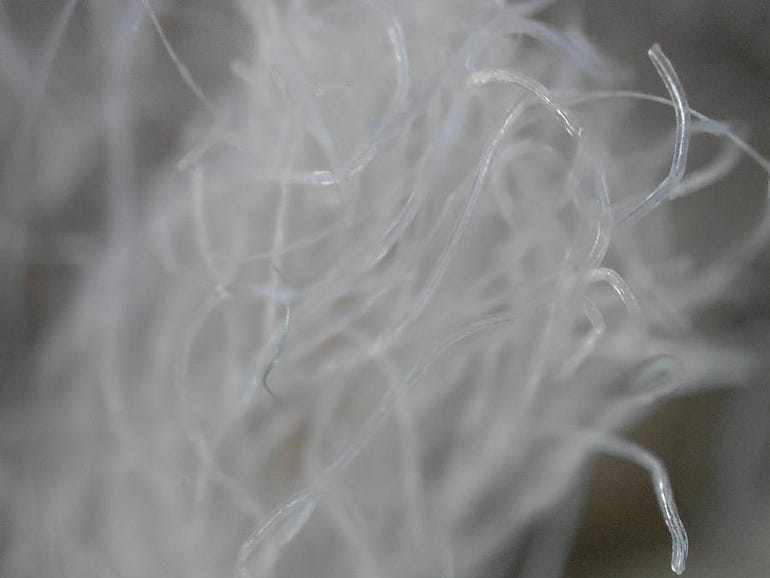Oppo Find X3 Pro camera deep dive: Microscope mode offers unique shooting experience | ZDNet
The Oppo Find X3 Pro, see Sandra Vogel’s full review, is available now and offers some interesting camera functionality that I’ve been testing out for a couple of weeks. Sandra gave the Find X3 Pro an 8.5/10 rating and I fully agree with that assessment.
In addition to all of the great smartphone features on the Find X3 Pro, the rear quad-camera system is interesting since it opens up a new area for creativity while also offering more color support than native Android code. Oppo worked hard to provide a compelling camera experience through hardware and software. While Sandra noted the large camera protrusion as a con, I’m a fan of the elegant way the glass back transitions up and into the camera array.
Also: Oppo Find X3 Pro review: Flagship smartphone features at a premium price
There are four cameras on the back of the Oppo Find X3 Pro. Starting at the top right and working clockwise we have the following:
- Ultra-wide (top right): 50MP Sony IMX 766 sensor with 1/1.56-inch sensor size, f/2.2 aperture, 110.3 degrees field-of-view, and omni-directional PDAF
- Wide (bottom right): 50MP Sony IMX 766 sensor with 1/1.56-inch sensor size, f/1.8 aperture, OIS, and omni-directional PDAF
- Telephoto (bottom left): 13MP with f/2.4 aperture, 5x hybrid optical zoom, and 20x digital zoom
- Microlens (top left): 3MP microlens with f/3.0 aperture, 60x magnification, and FHD video recording
While we see other phones with rear quad-camera arrangements, Oppo added a twist with the microlens camera. We also see Oppo providing macro mode without a dedicated macro lens, as explained below.
Microscope mode
The microlens camera is unique on the Oppo Find X3 Pro and it’s pretty amazing to capture objects that cannot be seen by the naked eye. When you capture subjects with this lens, you discover another dimension of common subjects and this camera helps open up a world of creativity.
Once you enable this mode, you have to get very close to the subject and also hold a steady hand. The focus distance is about 3mm. You may have better luck using a tripod, but even with a freehand approach I was able to capture content. You may also find that you can rest an edge of the phone on your subject, or object around the subject, and capture interesting images.
In order to illuminate the microscopic, Find X3 Pro features a sapphire lens and ring light as exterior components of the microlens camera. When you enable this mode, you will immediately know which lens to line up on your subject as the ring around the camera glass lights up.
Check out the embedded image gallery, in order, since I first show the close-up image and then an image of what is provided with the microscope mode. The microlens camera captures square images with 1944 x 1944 pixels resolution.
RawPlus
When you switch into expert mode, also known as manual mode, in the RAW option area there is an option for RawPlus. With RawPlus enabled you can capture HDR content with 10-bit color support. This mode gives you more image data to work with for fine-tuning your results.
Movie mode
Slide on over in the camera software and select More. Tap on Movie mode to jump into a cinematic mode that supports billion color capture. The 10-bit capabilities of the phone are supported here with 4K video, HDR, Log, and BT.2020 color gamut support.
When in movie mode you also have quick access to full manual control of ISO, white balance, shutter speed, and focus. OIS and EIS support is also provided. I would love to have seen LG’s cool point zoom feature to make this a true movie camera.
Also: OnePlus 9 Pro review: No ads, no bloat, and new tech makes it the best Android
AI Highlight Video
Artificial intelligence is becoming commonplace on smartphones today, but the vital aspect is how well manufacturers are utilizing the power of AI. On the Oppo Find X3 Pro, we see an AI button in video mode. Similar to the AI function in photos that optimizes camera settings for the scene, the AI Highlight video mode detects scenes and then automatically manages HDR, night mode, audio zoom, and ultra-steady stabilization so you can focus on capturing your content.
AI Palettes
People enjoy exploring and developing their creativity. The AI Palettes option supports custom selection of one of your images that you can then set as a color filter and apply it to other photos in your collection.
Within the Photos app, tap on an image, select Edit, swipe over to AI Palettes, tap the Plus icon and then choose a photo as your color filter. You can then apply that custom filter to other images in your collection. With such custom capability, you are likely to create images unique to the world.
There are plenty of functions and features to discover in the Oppo Find X3 Pro, including the tripod button in night mode, bokeh video support, advanced settings, and much more.
For all the latest Technology News Click Here
For the latest news and updates, follow us on Google News.


